


ChessBase 17 - Mega package - Edition 2024
It is the program of choice for anyone who loves the game and wants to know more about it. Start your personal success story with ChessBase and enjoy the game even more.

The Sheraton Centro Histórico, where the world chess championship is being staged, is in the middle of Mexico City. As the name suggests, it is just a short walk to many interesting historical sites. On our second day in the city we undertook a first excursion, and the following pictures document our four-hour adventure.

First stop: El hemiciclo de Juarez – the monument to Benito Juárez,
hero of the country
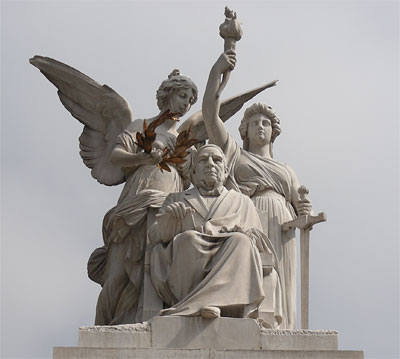
Benito Pablo Juárez García, a Zapotec Amerindian, served five terms (from 1858 to 1872) as President of Mexico, the only full-blooded indigenous national to serve in this office. Juárez is regarded as Mexico's greatest and most beloved leader for resisting the French occupation, overthrowing the Empire, and restoring the Republic.

In 1864 Maximilian von Hapsburg was proclaimed Emperor of Mexico, with the backing of Napoleon III and Mexican conservatives. He proposed a meeting with Juarez and offered him the post of Prime Minister of the Empire. Juarez refused with the following words: "It is given to men, sometimes, to attack the rights of others, to seize their goods, to threaten the life of those who defend their nation, to make the highest virtues seem crimes, and to give their own vices the luster of true virtue. But there is one thing that cannot be influenced either by falsification or betrayal, namely the tremendous verdict of history. It is she who will judge us."
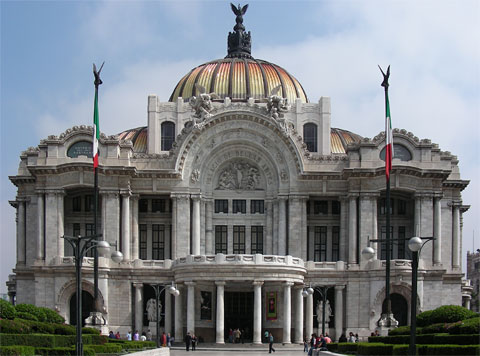
The Palacio de Bellas Artes ("Palace of Fine Arts"), the premier opera house in Mexico City, designed in imported Italian white marble. The theatre is used for classical music, opera and dance. Maria Callas sang in several productions at the Palacio early in her career, and there are recordings of several of her performances.
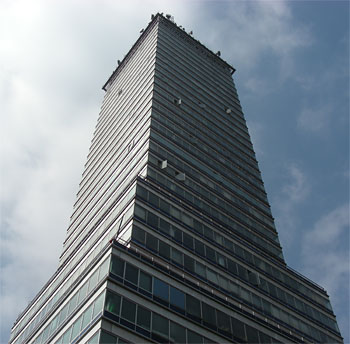
Incredible high-rise buildings: here la Torre Latinoamericana
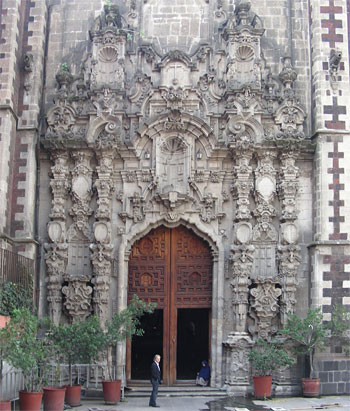
Tall and impressive: the Church of San Francisco de Asis
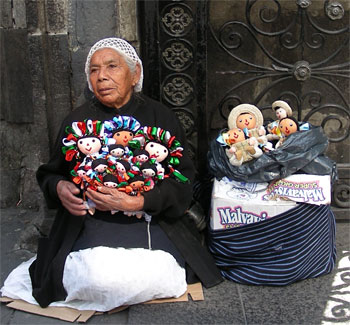
A doll vendor outside the church gate

Cuauhtémoc was the Aztec ruler of Tenochtitlan, whose name means "One That Has Descended Like an Eagle". He was born in 1502 and took power in 1520, when he ascended to the throne at the age of 18. At the time the city was being besieged by the Spanish and devastated by an epidemic of smallpox. In 1521, Cuauhtémoc was captured by the Spanish and tortured to make him reveal the whereabouts of hidden treasure, but in spite of having his feet put to a fire, Cuauhtémoc refused to divulge the information. In 1525 Cuauhtémoc was executed, at the age of just 23. Many places in Mexico are named in honour of Cuauhtémoc.

Police women in Francisco I. Madero Street, urging cars to go faster
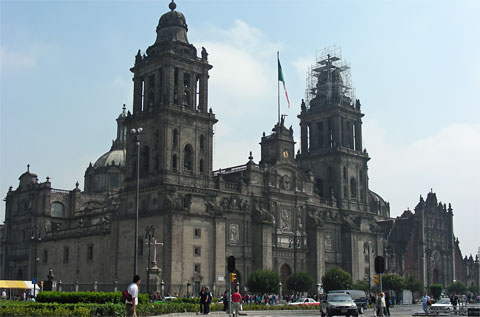
The "Catedral Metropolitana" (Metropolitan Cathedral) is located beside the Zócalo or Constitution Square. It is the oldest in the Americas and one of the largest cathedrals in the Western Hemisphere. It was consecrated in 1667, but the final elements – bell towers and central dome – were finished in 1813. Since it (like many buildings in Mexico City) was erected on soft clay subsoil, it is in danger of collapsing due to irregular sinking. For this reason permanent restoration work has to be undertaken.

Mexico is a Catholic nation with deep veneration for the Virgin Mary
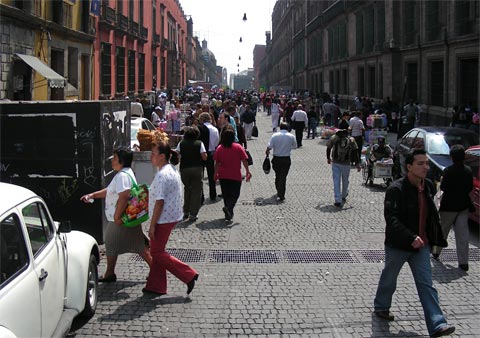
The Calle de Moneda, a big comercial street is closed for general traffic and
lined with vendors

A Mexican woman selling baskets and bags on the sidewalk
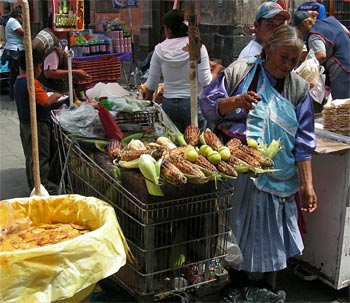
This lady in the picture above pelted me with corn husks, because I was taking pictures without consideration of a monetary transaction. We discussed the problem briefly, in English, Spanish and sign language. Now we are cool.

Look who we met: Guil Rusek, a somewhat quirky, intelligent and humorous Mexican IM, with a love for chess studies and classical music, whom we got to know during two tournaments in Morelia; and, on the right, Bob Rice, a New York lawyer who in 1993 founded and ran the breakaway "Professional Chess Association". Bob reminded us that on September 11th 1995 Rudy Giuliani inaugurated the PCA World Championship match between Garry Kasparov and Viswanathan Anand on the deck of the World Trade Center in New York. Really.

What Mexicans read: on one stand we found a collection of colorful books,
plus Guil's latest chess book

Bob bought the book, which was a steal at 15 pesetas – about one Euro
or just below two US dollars.
The Templo Mayor is in the heart of Mexico City, within walking distance of our hotel. According to legend, the Aztecs were told by a god to find a place where an eagle stood upon a cactus with a snake in its beak, and there, to build the Aztec capital Tenochtitlan that would become the epicenter of power for the powerful Aztec Empire.
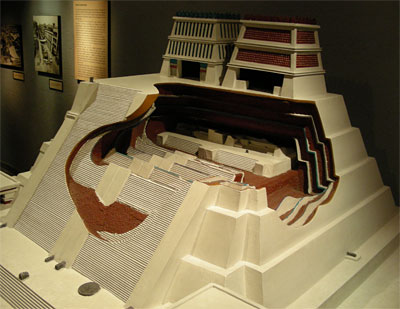
Above is a model of the Templo Mayor, which rose 60 m (200 ft) and was surmounted by dual shrines to the deities Huitzilopochtli (god of war and sun) and Tlaloc (god of rain and fertility). The temple was enlarged several times, the last time in 1487, when tens of thousands of people were sacrificed during the reconsecration.
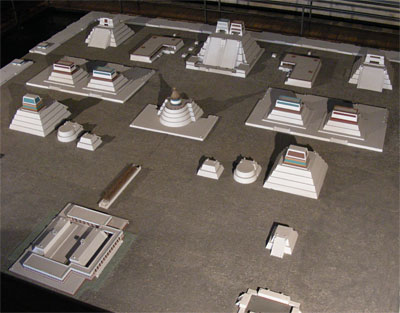
Numerous smaller buildings and platforms associated with the temple formed a closely-situated complex around its base. Above is a reconstruction of the original complex in the Museo Arqueológico located within the area today.
In 1978 electricity workers unearthed a giant stone disc (above) of Coyolxauqui, an Aztec goddess. Further exploration revealed that there was an entire archaeological wonder lying beneath Mexico City's streets, and a decision was taken to demolish some old colonial buildings, to reveal the Templo Mayor (Main Temple). Cautionary note: the rest of this section is not for the faint-hearted.

Bob Rice (right) learning all the horrific details of Coyolxauqui from
Guil
Coyolxauhqui ("face painted with bells”) was a powerful magician who led her siblings in an attack on their mother, Coatlicue, the maternal Earth deity, who had become pregnant and thus embarrassed her other children. During the attack Coatlicue’s fetus, Huitzilopochtli, sprang from her womb in full war armor and killed Coyolxauhqui, along with her 400 brothers and sisters. He cut off her limbs, then tossed her head into the sky where it became the moon, so that his mother would be comforted in seeing her daughter in the sky every night.

The large shield-shaped Coyolxauhqui stone relief reflects this story. On it Coyolxauhqui is shown spread out on her side, with her head, arms and legs chopped away from her body. Scholars believe that the decapitation and destruction of Coyolxauhqui is reflected in the pattern of warrior ritual sacrifice. First, captives’ hearts were cut out. Then they were decapitated and had their limbs chopped off. Finally, their bodies were cast from the temple to lie, perhaps, on the great Coyolxauhqui stone.

The Templo Mayor was destroyed in 1521 after the conquest of the Aztec empire by the Spanish conquistadores. Remains of the lower portions of the temple complex have been discovered by modern archaeologists buried under a portion of modern Mexico City.

The above stone depiction of a snake still retains its original coloring

A much smaller dragon hunts for insects on the stones of the Templo ruins

A giant inscribed wall describing the history of Templo Mayor
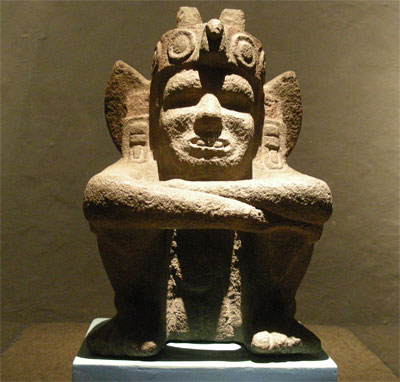
This interesting character is Tlaloc, the Aztec god of rain and fertility. He was greatly feared among the Aztecs, who drowned children to appease him. They believed that Tlaloc was responsible for both floods and droughts. It was believed he often used lightning bolts to make the people sick. Legends says that he had four different jugs of water in his possession. When he emptied the first one, it brought life to plants, to Earth. The second would cause blight, the third brought on frost, and the fourth would bring total destruction.
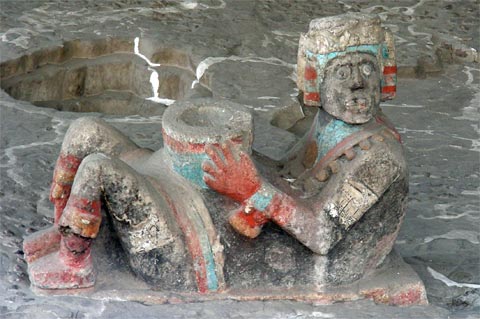
Chac-Mool is a Pre-Columbian Mesoamerican stone statue, depicting a human figure
always in a reclining position the head up and turned to one side, holding a
tray over the stomach. The exact symbolism of this position is unknown. Chac-Mools
can be found throughout Central Mexico and Yucatan.

Two unidentified friends we made in the Templo museum

An Ocelot Jaguar exhibited in two very different phases of its life

Curanderos, traditional folk healers or shamans, respected members of the community, who are used for curing physical and spiritual illnesses. They use herbs and other natural remedies, but their primary method of healing is the supernatural. This is because they believe that the cause of many illnesses are lost malevolent spirits, a lesson from God, or a curse. Curanderos cure ailments like espanto ("shock"), empacho ("surfeit"), susto ("fright"), mal aire ("bad air"), and mal de ojo ("evil eye")
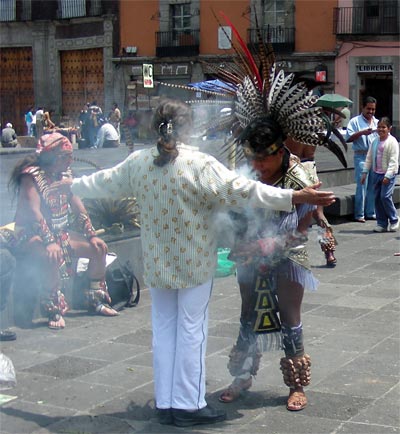
The entire area is filled with the scent of herbal smoke, coming from censers which the Curanderos swing around their patients in a cleansing ritual known as Limpia. The practice has been around for quite some time now – at least since 500 BC.
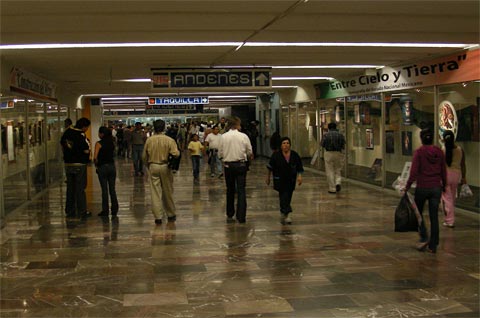
The trip back to the hotel in the subway, quite modern and built by the
French
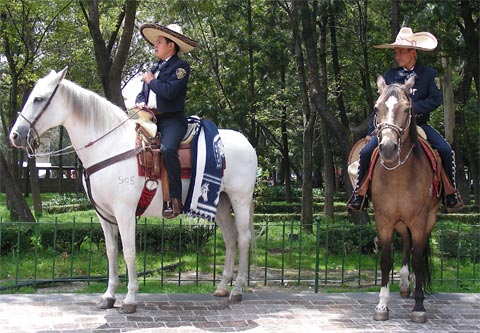
Mounted police Mexican style in the central park outside our hotel

This is how they patrol the park, ensuring the safety of visitors and tourists
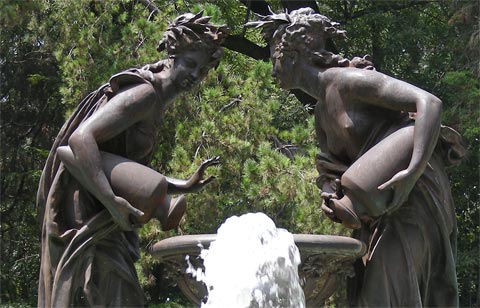
A fountain, like so many others we found all around the city center